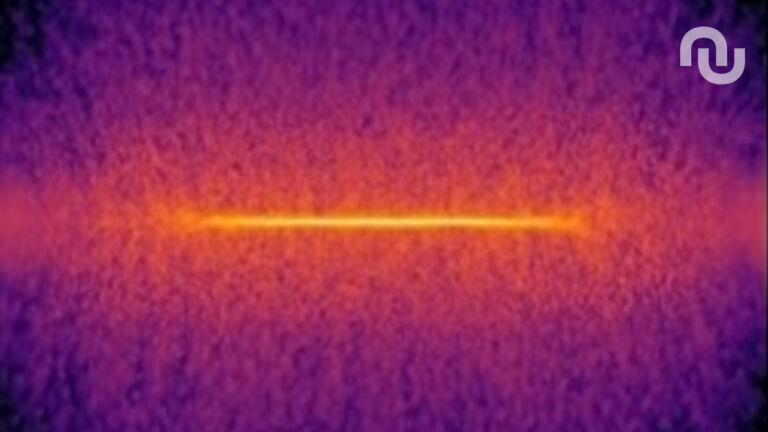Publié : 23 November 2025
Actualisé : 2 hours ago
Fiabilité : ✓ Sources vérifiées
Je mets à jour cet article dès que de nouvelles informations sont disponibles.
📋 Table of Contents
Imagine for a moment: our Milky Way, this majestic spiral where our little Earth nestles, harbors hundreds of billions of stars. A dizzying, almost unimaginable figure. For decades, scientists have dreamed of mapping this organized chaos, of understanding every stellar dance, every cosmic breath. But the cosmos is vast, and our tools, however powerful, have often run up against computational limits.
Until today. A team of Japanese researchers has just shattered all barriers, offering an unprecedentedly precise simulation of our galaxy. Get ready for a breathtaking journey, because science has just given us the keys to a celestial gate.
🔭 A Cosmic Tour de Force: Our Milky Way as Never Seen Before!
It’s a feat that sounds like science fiction, but it’s very much a reality. Thanks to an alliance between artificial intelligence and the power of supercomputers, these visionaries have succeeded in modeling not one billion, but a staggering 100 billion stars! That’s almost the entirety of our galaxy, set in motion over a period of 100,000 years.
The key takeaway: Thanks to AI and cutting-edge supercomputers, Japanese researchers have created an unprecedented simulation of the Milky Way, modeling 100 billion stars and their evolution over 100,000 years.
Until now, the best simulations capped at one billion stars, after months of calculations. That wasn’t bad, of course, but to grasp the complexity of a galaxy, every detail matters. And that’s precisely where this new method changes everything.
🤯 The Challenge of the Infinitely Large
Understanding the Milky Way is a bit like trying to predict the movements of billions of marbles in a giant cosmic pinball machine, where each marble is a star, a nebula, a black hole. Gravitational interactions, supernova explosions, interstellar gases… everything is in perpetual motion. Real observations are limited, and theoretical models had to juggle countless variables.
Historically, simulating even a million years of galactic evolution took nearly two weeks of intense calculations. Each ‘particle’ in these simulations represented hundreds of stars. Sufficient for the broad strokes, but the picture remained blurry for more localized, intimate events.
Simulating a galaxy and its evolution is crucial for understanding the formation of such a system, its structure, and how it all moves.
It was this level of detail that was sorely missing and made the task almost impossible without a radically different approach.
✨ When AI Unravels Celestial Chaos
The novelty isn’t just in the number of stars; it’s especially in the method. The researchers developed a machine learning technique that, combined with boosted supercomputers, allowed them to multiply the number of visible particles by a hundred. And the craziest part is the speed!
Where a million-year simulation used to take 13 days, it now takes just three short hours! And if you have four months, you can now simulate a billion years of galactic evolution. A monumental technological leap that opens up unprecedented prospects for astrophysics.
Important: The new method doesn’t just increase the number of stars; it drastically reduces computation time, making galactic exploration much more accessible and profound.
Imagine the secrets we could finally unravel about the birth and death of stars, the formation of spiral arms, or the ballet of supermassive black holes.
🧠 The Artificial Brain Behind the Stars
How did AI achieve this magic trick? The trick lies in its ability to predict. Instead of crudely calculating every interaction, which would consume an enormous amount of energy, the AI learned to anticipate the movements of gases and the impact of major events like supernovae over tens of thousands of years.
It acts like an orchestra conductor, managing complex simulations without overloading the computational power for the rest. This intelligent approach makes models much more agile and efficient. It’s no longer a matter of “more raw power,” but of “more intelligence.”
| Feature | Old Models | New AI Simulation |
|---|---|---|
| Number of Stars Simulated | Up to 1 billion | Up to 100 billion |
| Computation Time (for 1 million years) | ~13 days | ~3 hours |
| Primary Method | Intensive computations | Machine learning (AI) |
It’s a lesson technology is teaching us: finesse and anticipation can be far more productive than simple brute force.
🌍 From Stars to Weather Forecasts: The Earthly Impact
What this team has accomplished isn’t just about astrophysics. Researchers are convinced that this methodology can revolutionize other fields where the simulation of complex phenomena is vital. Think of weather forecasting, where the dance of clouds and air currents is infinitely complex. Or ocean movements, with their currents, tides, and the impact of climate change.
Climate science, with its global models and local variations, could also greatly benefit from these advances. AI, by unraveling the chaos of the stars, perhaps offers us new keys to understanding and anticipating the most pressing challenges on our own planet. The cosmos inspires us, but it also helps us live better down here. One more star on our technological dashboard!
Who would have thought that by looking to the infinitely large, we would find solutions for the infinitely near? AI continues to surprise us, one star at a time.




















0 Comments